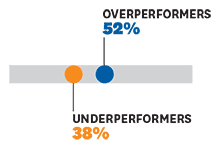Bitcoin Development Similar to
1800s Gold Rush

Present day Bitcoin and altcoin development
appear to be recounting a theory that played out in the early mining industry. As was the pattern during the actual gold rush of the 1800s, while some people took the risk and spent their time looking for gold, other folks watched on non-judgmentally and lucratively supplied the "picks and shovels" that enabled the fever-pitched masses to take a shot at "striking it big." Drawing on some similarities and contrasts between the actual "gold rush" and the new "digital gold rush" provides a good framework to describe how industries today are being impacted by Bitcoin. Bitcoin evangelist and technologist Melvin Petties explains how the emergence of Bitcoin has given rise to different kinds of related endeavors, pointing out the attitude of some key players and the impact on the crypto ecosystem.
Picks And Shovels Model: Industries That Make Equipment
According to Petties, in the olden days, the absolute quantity of precious metal was not known so the risk of participation was greater. The big rewards were random yet impactful — whole towns were built from major gold strikes, which made the lure to participate even greater. People from all walks of life, even the very poor, were compelled to participate and their chances of success were arguably relatively the same.
Irresponsible
Fast forward to the present day, Petties notes that not just anybody can make a "pick and shovel" when it comes to Bitcoin mining.
Petties says:
“In fact, the technology is so coveted that for the years between 2013-2015 (Bitcoin good time days) most mining equipment providers were ultimately found to be fraudulent or irresponsible in how they pre-sold equipment but never delivered it.”
Petties explains that microchip shortages were always the common scapegoat. However, the real issue was that most people who knew how to make a real pick and shovel (ASIC chip-based mining computer) held onto the knowledge, built the product, mined with it for most of its practical lifetime (innovations were happening every month and the difficulty level was rising even more rapidly due to the rush of entrants) and then delivered it to the customer only when it was virtually worthless.
Wild West Days
Also, most other cloud mining or new mining equipment companies were either not worth the ROI at the time (if you were thinking short-term) or an elaborate pre-order scam/trap for victims. The latter was willing to send Bitcoin to anywhere in the world to receive a miner. Consumer protection was non-existent which made the "buyer beware" burden too heavy and often times a soul-crushing experience to be scammed. Compared to the gold rush of the 1800s, Petties notes that it was not possible to have a massive stealth mining operation. However, in the crypto age, that's exactly what a lot of companies did to cement their space and build a massive moat around themselves to eventually experiment with other value-added services to be built on top of the network that they breathed life into.
Me Too Shops
Another area of significant comparison in terms of activities surrounding the development of Bitcoin is the “value-added service industry.” Petties points out that in the 1800s during the gold rush, pop-up towns and communities were the norms. When a lucky team would strike a big vein they would ultimately reinvest the wealth back into the community, opening banks, general stores, parlors, salons and housing for the existent and soon to arrive patrons that would have certainly heard the news and set their sights to capture some of that same luck.
In the big booming Bitcoin days, this represents all of the "me too" shops that began to publicly accept Bitcoin and make a splash in the news. All the activity served to drive more and more VC money into the space as the community searched for "killer apps" that would live on top of Bitcoin and usher in Bitcoin 2.0 — streamlined payments, borderless markets, no remittances, etc. Ultimately, the most impacted industries were not retail due to the existing reluctance towards the mainstream adoption of the cryptocurrency.
Value-Added Services
Petties sees some positivity from the circumstances. He notes that what happened through all of that is the discovery of financial services as the real added value, namely legitimate exchanges that were run by competent folks who knew how to secure digital currency and could partner with banks and insurance companies to properly protect customer accounts. Petties concludes by explaining that because Bitcoin, as money, is Blockchain's first "killer app," the obvious industries that will shine will be those that facilitate the safe transfer of crypto and investment exposure — that is financial services. “I'm encouraged by the strides that the Winklevoss brothers have taken to make that a reality,” says Petties. “True pioneers in understanding the need to make digital currency safe and broadly available in a regulatory compliant way.”
Chuck Reynolds

Marketing Dept
Contributor
Please click either Link to Learn more about -Bitcoin.
Alan Zibluk Markethive Founding Member












